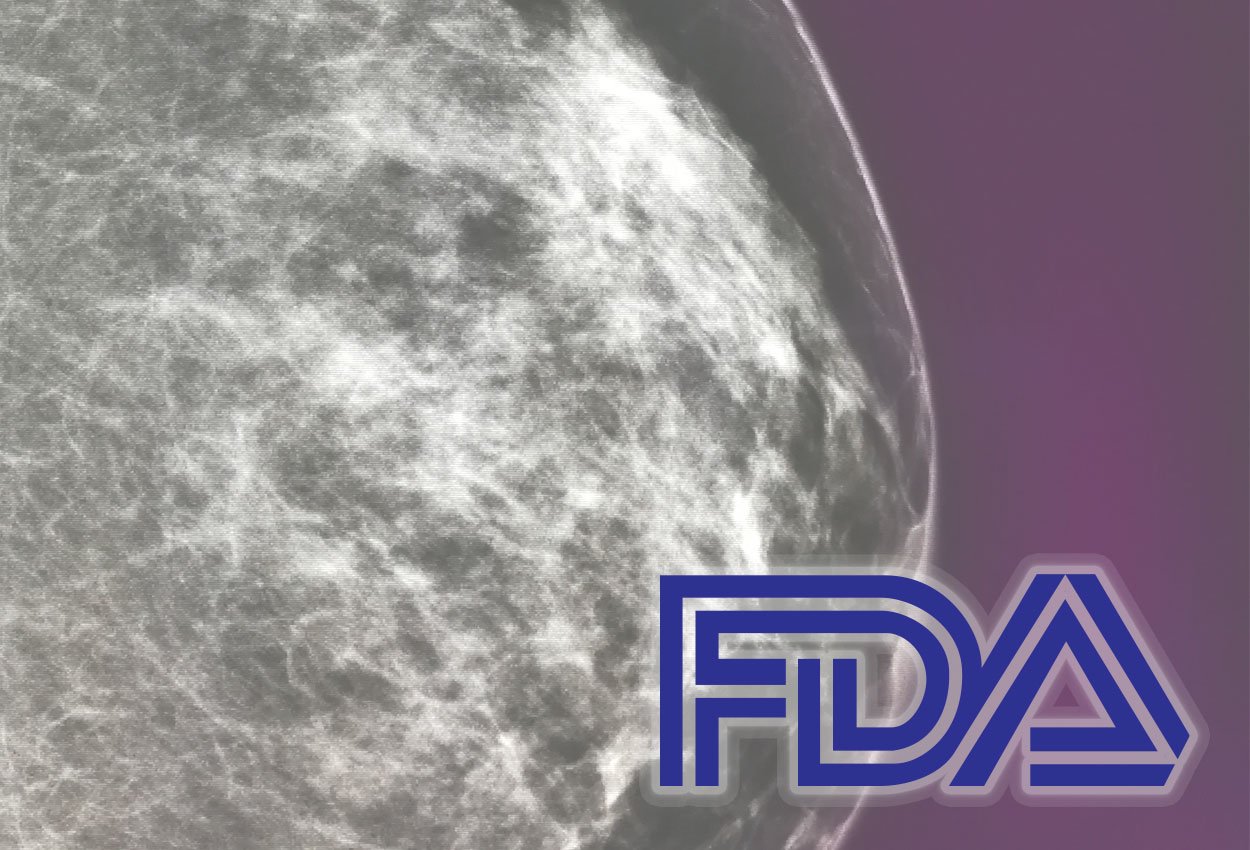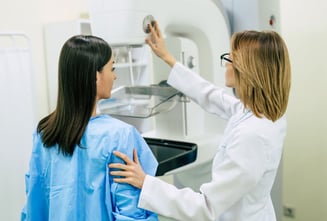
The new Food and Drug Administration (FDA) breast density notification legislation will become effective nationally starting September 10, 2024. In this federally mandated requirement patients who have a mammogram will be notified directly of their individual breast density in their lay-letter (a generalized report of the findings and assessment that is given or sent directly to the patient).
Why the patient lay letter matters
While many states started voluntary or state-mandated density notifications to patients before this year, the new federal mandate will cover all facilities that perform mammography in the United States (or are under FDA regulation). The importance of this news is that compliance will become a requirement for Mammography Quality Standards Act (MQSA) accreditation.
A patient lay letter (which is sent directly to the patient) is a generalized report written in understandable, non-medical language and expresses the final overall assessment and recommended action needed based on that assessment. For example, the final assessment of a mammogram that reveals no evidence of cancer is reported as negative (no abnormal findings) or benign (there are findings, but they are not cancer) and the recommended action is to return to annual mammograms.
 The lay letter is contrasted with the official written report (which is sent to the patient’s referring doctor) contains more details of findings - for example, the size and location of an obviously benign mass, specific information regarding what history was available at the time of the interpretation, and what prior studies (if any) were compared. It also includes the overall assessment and the final recommendation as in the lay letter, but in greater detail.
The lay letter is contrasted with the official written report (which is sent to the patient’s referring doctor) contains more details of findings - for example, the size and location of an obviously benign mass, specific information regarding what history was available at the time of the interpretation, and what prior studies (if any) were compared. It also includes the overall assessment and the final recommendation as in the lay letter, but in greater detail.
This is the letter that is immortalized in the patient’s medical record and what is sent to the referring doctor, is a legally discoverable document and what is generally thought of as the “report.”
How breast density is defined
Breast density is defined as the radio-opacity (whiteness) of the parenchyma of the breast tissue as seen on a mammogram (x-ray). The ACR describes four (4) breast composition categories and from a practical standpoint depicts the relative percentage of opaque breast tissue on the mammogram as compared to the size of the breast:
(A) Fatty (<10%) - “almost completely fatty”
(B) Average (10% to <50%) - “scattered areas of fibro-glandular density”
(C) Heterogeneously dense (50% to 75%) - “heterogeneously dense breasts which may obscure small masses”
(D) Extremely dense (>75%) - “extremely dense breasts, which lowers the sensitivity of mammography”
*DENSE BREAST TISSUE = (Heterogeneously dense + Extremely dense)
Why knowing breast density matters
So, why are we (or our congressmen) so concerned about the composition of your breast tissue? Research has shown that dense breast tissue is an independent risk factor for developing breast cancer and is considered in the assessment of risk for a women’s relative likelihood of developing breast cancer. This is because dense tissue is more metabolically active tissue as compared to fatty tissue. And as a practical matter, it is sometimes more difficult to find certain types of mammographic abnormalities in dense tissue on a mammogram (imagine looking for a white ball in the snow).
 The new amendment provides information that will inform women (not just their healthcare providers) with data that can help in evaluating and planning their breast healthcare and imaging strategy (should she add ultrasound to her screening regimen, as one example).
The new amendment provides information that will inform women (not just their healthcare providers) with data that can help in evaluating and planning their breast healthcare and imaging strategy (should she add ultrasound to her screening regimen, as one example).
This new density notification will have two distinct density categories included in the lay letter with this specific mandated language:
NOT DENSE: “Breast tissue can either be dense or not dense. Dense tissue makes it harder to find breast cancer on mammograms and also raises the risk of developing breast cancer. Your breast tissue is not dense. Talk to your healthcare provider about breast density, risks for breast cancer, and your individual risk.”
DENSE: “Breast tissue can be either dense or not dense. Dense tissue makes it harder to find breast cancer on mammograms and also raises the risk of developing breast cancer. Your tissue is dense. In some people with dense tissue, other imaging tests in addition to a mammogram may help find cancers. Talk to your healthcare provider about breast density, risks for breast cancer, and your individual risk.”
The good news is that there are evidence-based, practical protocols that may be useful and can be implemented in most standard practice situations:
- Average or intermediate risk = screening mammogram starting at 40 (annual)
- Average risk + dense tissue = screening mammogram + screening ultrasound (or CEM, MRI or abbreviated MRI)
- High risk + any density = screening mammogram + screening MRI (starting at age 25 or older)
As an aside, it is my opinion that tomosynthesis (3D) mammography should be performed as a standard of care in all women regardless of breast density. It is literally a better mammogram.
Early communication with patients and providers key to success
 Given that the mandated language prompts the patients to “talk to your healthcare provider about breast density, risks for breast cancer, and your individual risk,” it is best to preemptively announce the new changes.
Given that the mandated language prompts the patients to “talk to your healthcare provider about breast density, risks for breast cancer, and your individual risk,” it is best to preemptively announce the new changes.
Otherwise, you run the risk of patients inundating the referring doctors’ offices with questions about their “abnormal dense” mammogram, which in turn has the staff from the doctors’ office calling YOU all day! And no one wants that!
I have found that following this protocol can help alleviate much of the anticipated misunderstanding:
- Craft a letter to referring providers about the new mandate and date of implementation.
- Craft a letter to all patients regarding the new mandate (send to all current patients in your system).
- Have copies of the patient letter available in your facility to give to patients.
- Technologists discuss this new mandate with individual patients once they complete the exam (example, informing the patient that they will be receiving their results in a certain timeframe and to be aware of the new wording of the breast density notification that will appear in their lay-letter, so that they are not surprised by the new change in language.
- Post on your facility website.
Early communication with your providers and patients well in advance of the change will help alleviate confusion, anxiety and serve as another way to establish you and your facility as a breast health resource for the community.
An ounce of prevention, as they say, is worth a pound of cure.
***special thanks to Rebecca Rogers, RT for her input on this article
Sources/References:
Fda.gov
Ncbi.nlm.nih.gov. (Determination of mammographic breast density using a deep convolutional neural network)
Densebreast-info.org (FDA National Reporting Standard)
ACR Appropriateness Criteria
The Breast Test Book: A woman’s guide to mammography and beyond

Connie Jones, M.D., Fellowship Trained, Breast Imaging Radiologist, Author of: “The Breast Test Book: A woman’s guide to mammography and beyond”
